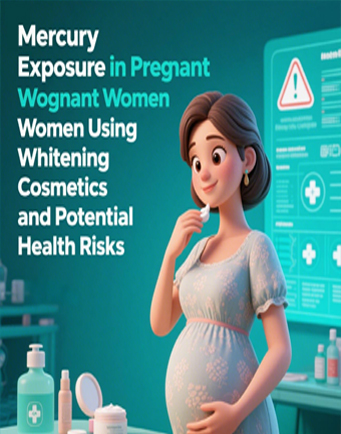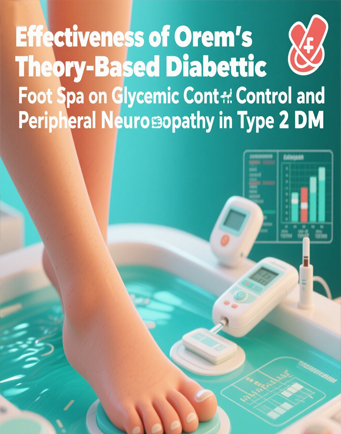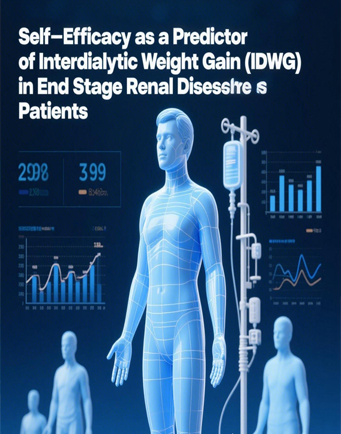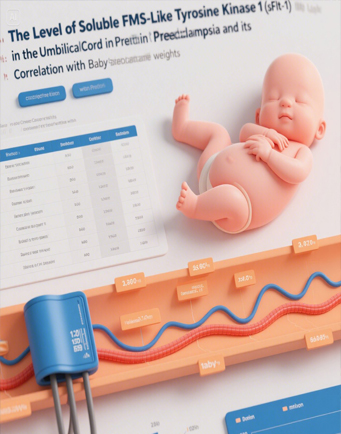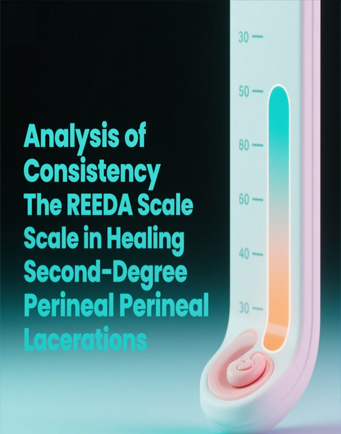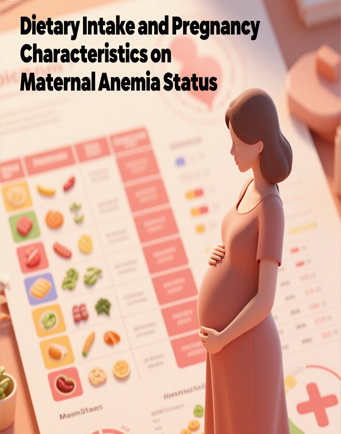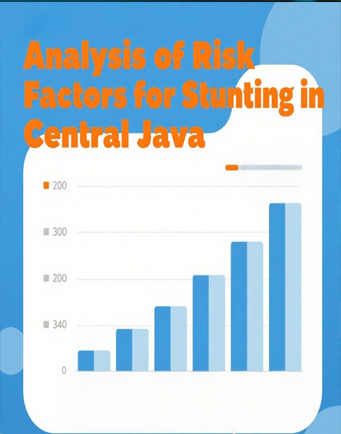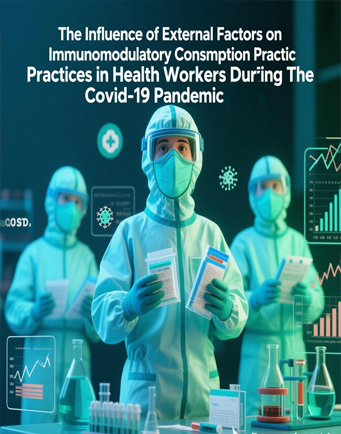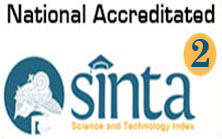Socioeconomic Disparities in Completed Antenatal Care: Evidence from Nigeria
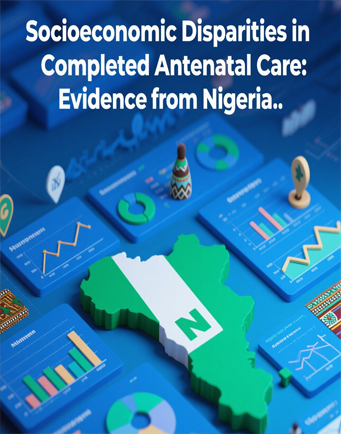
Downloads
The Maternal Mortality Rate is still high in Nigeria. Complete antenatal care (ANC) of eight visits during pregnancy is an important strategy to control this condition. This research analyzed the socioeconomic disparities in completed ANC in Nigeria. The study examined secondary data from the 2018 Nigerian Demographic and Health Survey. The study included 21,792 women aged 15 to 49 who had given birth in the previous five years. We looked at eight control factors in addition to completed ANC as an outcome variable and socioeconomic as an exposure variable: domicile, age, religion, marital status, education, occupation, and parity. Data were analyzed using binary logistic regression. The result showed the completed ANC proportion in Nigeria is 21.6%. Meanwhile, the poorer were 1.316 times more likely than the poorest to perform completed ANC (AOR 1.316; 95% CI 1.316-1.317). The middle was 1.994 times more likely to achieve completed ANC than the poorest (AOR 1.994; 95% CI 1.993-1.994). Meanwhile, the richer were 2.808 times more likely than the poorest to achieve completed ANC (AOR 2.808; 95% CI 2.807-2.808). Moreover, the richest were 4.112 times more likely to perform completed ANC than the poorest in Nigeria (AOR 4.112; 95% CI 4.112-4.113). The study revealed significant socioeconomic disparities in the completion of ANC in Nigeria, with wealthier women being more likely to achieve completed ANC compared to their less-wealthy counterparts.
Abbani, A. Y., Sawangdee, Y., Omisakin, O. A., & Maretalinia, M. (2023). Socio-Demographic Determinants of Non-Utilisation of Antenatal Care Services by Women in the Northern Region of Nigeria. Journal of Health Research, 37(3), 261–269. https://doi.org/10.56808/2586-940X.1043
Aderounmu, B., Azuh, D., Onanuga, O., Oluwatomisin, O., Ebenezer, B., & Azuh, A. (2021). Poverty drivers and Nigeria’s development: Implications for policy intervention. Cogent Arts and Humanities, 8(1), 1–13. https://doi.org/10.1080/23311983.2021.1927495
Adewuyi, E. O., Zhao, Y., Auta, A., & Lamichhane, R. (2017). Prevalence and factors associated with non-utilization of healthcare facility for childbirth in rural and urban Nigeria: Analysis of a national population-based survey. Scandinavian Journal of Public Health, 45(6), 675–682. https://doi.org/10.1177/1403494817705562
Amanuel, T., Dache, A., & Dona, A. (2021). Postpartum Hemorrhage and its Associated Factors Among Women who Gave Birth at Yirgalem General Hospital, Sidama Regional State, Ethiopia. Health Services Research and Managerial Epidemiology, 8, 23333928211062777. https://doi.org/10.1177/23333928211062777
Ayamolowo, L. B., Odetola, T. D., & Ayamolowo, S. J. (2020). Determinants of choice of birth place among women in rural communities of southwestern Nigeria. International Journal of Africa Nursing Sciences, 13, 100244. https://doi.org/10.1016/j.ijans.2020.100244
Bhusal, U. P. (2021). Predictors of wealth-related inequality in institutional delivery: a decomposition analysis using Nepal multiple Indicator cluster survey (MICS) 2019. BMC Public Health, 21(1), 1–15. https://doi.org/10.1186/s12889-021-12287-2
Chilot, D., Belay, D. G., Ferede, T. A., Shitu, K., Asratie, M. H., Ambachew, S., Shibabaw, Y. Y., Geberu, D. M., Deresse, M., & Alem, A. Z. (2023). Pooled prevalence and determinants of antenatal care visits in countries with high maternal mortality: A multi-country analysis. Frontiers in Public Health, 11, 1035759. https://doi.org/10.3389/fpubh.2023.1035759
Denny, H. M., Laksono, A. D., Matahari, R., & Kurniawan, B. (2022). The Determinants of Four or More Antenatal Care Visits Among Working Women in Indonesia. Asia-Pacific Journal of Public Health, 34(1), 51–56. https://doi.org/10.1177/10105395211051237
Ekholuenetale, M., Benebo, F. O., & Idebolo, A. F. (2020). Individual-, household-, and community-level factors associated with eight or more antenatal care contacts in Nigeria: Evidence from Demographic and Health Survey. Plos One, 15(9), e0239855. https://doi.org/10.1371/journal.pone.0239855
El-Khatib, Z., Odusina, E. K., Ghose, B., & Yaya, S. (2020). Patterns and predictors of insufficient antenatal care utilization in Nigeria over a decade: A pooled data analysis using demographic and health surveys. International Journal of Environmental Research and Public Health, 17(21), 1–14. https://doi.org/10.3390/ijerph17218261
Fagbamigbe, A. F., Olaseinde, O., & Setlhare, V. (2021). Sub-national analysis and determinants of numbers of antenatal care contacts in Nigeria: assessing the compliance with the WHO recommended standard guidelines. BMC Pregnancy and Childbirth, 21(1), 1–19. https://doi.org/10.1186/s12884-021-03837-y
Gebeyehu, F. G., Geremew, B. M., Belew, A. K., & Zemene, M. A. (2022). Number of antenatal care visits and associated factors among reproductive age women in Sub-Saharan Africa using recent demographic and health survey data from 2008–2019: A multilevel negative binomial regression model. PLOS Global Public Health, 2(12), e0001180. https://doi.org/10.1371/journal.pgph.0001180
Guyo, T. G., Banja, Y. B., & Ayele, T. A. (2023). Multilevel analysis of place of delivery among reproductive age women in Ethiopia. Reproductive, Female and Child Health, 2(3), 216–226. https://doi.org/10.1002/rfc2.36
Habitamu, D., Goshu, Y. A., & Zeleke, L. B. (2019). The magnitude and associated factors of postpartum hemorrhage among mothers who delivered at Debre Tabor general hospital 2018. BMC Research Notes, 12, 1–6. https://doi.org/10.1186/s13104-019-4646-9
Hofmeyr, G. J., Ramogola-Masire, D., Black, R. E., Heuer, A., Walker, N., Rogozińska, E., Ashorn, P., Ashorn, U., Koivu, A., Näsänen-Gilmore, P., Bhandari, N., & Bhutta, Z. A. (2023). Evidence-based antenatal interventions to reduce the incidence of small vulnerable newborns and their associated poor outcomes. The Lancet, 401(10389), 1733–1744. https://doi.org/10.1016/S0140-6736(23)00355-0
Idowu, A., Israel, O. K., & Akande, R. O. (2022). Access, perceived quality and uptake of antenatal services in urban communities of Osun state, Southwest Nigeria. African Journal of Reproductive Health, 26(12), 78–89. https://doi.org/10.29063/ajrh2022/v26i12.9
Ilori, T., Adewale, B. A., Obembe, T. A., & Morakinyo, O. M. (2022). Socio-economic factors associated with antenatal care in Nigeria. African Journal of Reproductive Health, 26(8), 123–133. https://doi.org/10.29063/ajrh2022/v26i8.12
Kumbeni, M. T., & Apanga, P. A. (2021). Institutional delivery and associated factors among women in Ghana: Findings from a 2017-2018 multiple indicator cluster survey. International Health, 13(6), 520–526. https://doi.org/10.1093/inthealth/ihab002
Laksono, A. D., Rukmini, R., & Wulandari, R. D. (2020). Regional disparities in antenatal care utilization in Indonesia. PLoS ONE, 15(2), e0224006. https://doi.org/10.1371/journal.pone.0224006
Laksono, A. D., Wulandari, R. D., Budiana, I., & Rohmah, N. (2023). Institutional delivery in East Nusa Tenggara, Indonesia: does antenatal care matter? Journal of Public Health (Berl.), 1–10. https://doi.org/10.1007/s10389-023-02111-z
Michael, T. O., Nwokocha, E. E., & Agbana, R. D. (2023). Issues in antenatal care services utilization among unmarried adolescents in Akwa Ibom state, Nigeria. Journal of Population and Social Studies [JPSS], 31, 359-380. Retrieved from: https://so03.tci-thaijo.org/index.php/jpss/article/view/256107
Mustapha, A. A., Akpor, O. A., & Muhammad, F. (2021). Religion and Pregnancy: Post-Partum Mothers Religious Beliefs and Practices in an Urban Area in Southwestern Nigeria. Annals of the Romanian Society for Cell Biology, 25(4), 4692-4702.
Nagdev, N., Ogbo, F. A., Dhami, M. V., Diallo, T., Lim, D., & Agho, K. E. (2023). Factors associated with inadequate receipt of components and non-use of antenatal care services in India: a regional analysis. BMC Public Health, 23(6), 1-17. https://doi.org/10.1186/s12889-022-14812-3
National Population Commission (NPC) [Nigeria] and ICF. (2019). Nigeria Demographic and Health Survey 2018. Abuja, Nigeria, and Rockville, Maryland, USA: NPC and ICF.
Nnachebe, M., Id, O., Onah, R. C., & Onah, F. E. (2023). Linkages between women’s empowerment, religion, marriage type, and uptake of antenatal care visits in 13 West African countries. PLOS Global Public Health, 3(6), 1–22. https://doi.org/10.1371/journal.pgph.0000406
Noh, J. W., Kim, Y. M., Lee, L. J., Akram, N., Shahid, F., Kwon, Y. D., & Stekelenburg, J. (2019). Factors associated with the use of antenatal care in Sindh province, Pakistan: A population-based study. PloS one, 14(4), e0213987. https://doi.org/10.1371/journal.pone.0213987
Nwosu, C. O., & Ataguba, J. E. (2019). Socioeconomic inequalities in maternal health service utilisation: a case of antenatal care in Nigeria using a decomposition approach. BMC public health, 19, 1493. https://doi.org/10.1186/s12889-019-7840-8
Odusina, E. K., & Oladele, O. S. (2023). Is there a link between the autonomy of women and maternal healthcare utilization in Nigeria? A cross-sectional survey. BMC Women's Health, 23, 167. https://doi.org/10.1186/s12905-023-02317-z
Okedo-Alex, I. N., Akamike, I. C., Ezeanosike, O. B., & Uneke, C. J. (2019). Determinants of antenatal care utilisation in sub-Saharan Africa: a systematic review. BMJ Open, 9(10), e031890. https://doi.org/10.1136/bmjopen-2019-031890
Olasode, T., ChukwuemekaEke, & OluwabunmiOlaleye, O. (2022). Has economic growth reduced poverty in Nigeria? A critical analysis of the last two decades. Journal of Enterprise and Development (JED), 4(2), 1–25. https://doi.org/10.20414/jed.v4i2.5506
Olayinka, A., Joel, A., & Bukola, D. (2012). Factors influencing utilization of antenatal care services among pregnant women in Ife Central Lga , Osun State Nigeria National Hospital Abuja , Nigeria. Pelagia Research Library, 3(3), 1309–1315.
Olorunsaiye, C. Z., Degge, H. M., & Lengmang, S. J. (2018). Age-specific factors related to institutional delivery in Nigeria: insights from the 2011 multiple indicator cluster survey. Women and Health, 58(9), 1001–1016. https://doi.org/10.1080/03630242.2017.1377801
Pervin, J., Venkateswaran, M., Nu, U. T., Rahman, M., O’Donnell, B. F., Friberg, I. K., Rahman, A., & Frøen, J. F. (2021). Determinants of utilization of antenatal and delivery care at the community level in rural Bangladesh. PloS One, 16(9), e0257782. https://doi.org/10.1371/journal.pone.0257782
Putri, N. K., & Laksono, A. D. (2022). Predictors of childbirth services in Indonesia. International Journal of Public Health Science, 11(2), 566–573. https://doi.org/10.11591/ijphs.v11i2.21324
Sasu, D. D. (2023). Number of people living in extreme poverty in Nigeria from 2016 to 2025. Statista. Retrieved from: https://www.statista.com/statistics/1287795/number-of-people-living-in-extreme-poverty-in-nigeria/
Sharma, A., Khapre, M., Meshram, R., & Gupta, A. (2023). Determinants of utilization of antenatal care services among recently delivered women residing in urban poor areas of Rishikesh, Uttarakhand, India—a cross-sectional study. Journal of Rural Medicine, 18(2), 87–95. https://doi.org/10.2185/jrm.2022-030
Sui, Y., Ahuru, R. R., Huang, K., Anser, M. K., & Osabohien, R. (2021). Household socioeconomic status and antenatal care utilization among women in the reproductive-age. Frontiers in Public Health, 9, 724337. https://doi.org/10.3389/fpubh.2021.724337
Umar, A. S. (2017). The use of maternal health services in Nigeria : does ethnicity and religious beliefs matter ? MOJ Public Health, 6(6), 442-447. https://doi.org/10.15406/mojph.2017.06.00190
Vasconcelos, A., Sousa, S., Bandeira, N., Alves, M., Papoila, A. L., Pereira, F., & Machado, M. C. (2023). Determinants of antenatal care utilization – contacts and screenings – in Sao Tome & Principe: a hospital-based cross-sectional study. Archives of Public Health, 81, 107. https://doi.org/10.1186/s13690-023-01123-1
World Health Organization. (2015). Trends in maternal mortality: 1990 to 2015: estimates by WHO, UNICEF, UNFPA, World Bank Group and the United Nations Population Division. World Health Organization.
World Health Organization. (2019). Trends in Maternal Mortality: 2000 to 2017: estimates by World Health Organization, UNICEF, United Nations Population Fund and The World Bank. World Health Organization.
World Health Organizaton. (2016). WHO recommendations on antenatal care for a positive pregnancy experience. World Health Organization.
World Health Organizaton. (2021). Maternal mortality. World Health Organizaton.
Wulandari, R. D., & Laksono, A. D. (2020). Determinants of knowledge of pregnancy danger signs in Indonesia. PLoS One, 15(5), e0232550. https://doi.org/10.1371/journal.pone.0232550
Wulandari, R. D., Laksono, A. D., Prasetyo, Y. B., & Nandini, N. (2022). Socioeconomic Disparities in Hospital Utilization Among Female Workers in Indonesia: A Cross-Sectional Study. Journal of Primary Care and Community Health, 13, 1–7. https://doi.org/10.1177/21501319211072679
Wulandari, R. D., Laksono, A. D., & Rohmah, N. (2021). Urban-rural disparities of antenatal care in South East Asia: a case study in the Philippines and Indonesia. BMC Public Health, 21(1), 1–9. https://doi.org/10.1186/s12889-021-11318-2
Wulandari, R. D., Qomarrudin, M. B., Supriyanto, S., & Laksono, A. D. (2019). Socioeconomic Disparities in Hospital Utilization among Elderly People in Indonesia. Indian Journal of Public Health Research and Development, 10(11), 1800–1804. https://doi.org/10.5958/0976-5506.2019.03885.3
Yadav, A. K., Sahni, B., Jena, P. K., Kumar, D., & Bala, K. (2020). Trends, Differentials, and Social Determinants of Maternal Health Care Services Utilization in Rural India: An Analysis from Pooled Data. Women’s Health Reports, 1(1), 179–189. https://doi.org/10.1089/whr.2019.0022
Zhang, X., Anser, M. K., Ahuru, R. R., Zhang, Z., Peng, M. Y. P., Osabohien, R., & Mirza, M. (2022). Do predictors of health facility delivery among reproductive-age women differ by health insurance enrollment? A multi-level analysis of Nigeria's data. Frontiers in Public Health, 10, 797272. https://doi.org/10.3389/fpubh.2022.797272
Copyright (c) 2025 JURNAL INFO KESEHATAN

This work is licensed under a Creative Commons Attribution-NonCommercial-ShareAlike 4.0 International License.
Copyright notice
Ownership of copyright
The copyright in this website and the material on this website (including without limitation the text, computer code, artwork, photographs, images, music, audio material, video material and audio-visual material on this website) is owned by JURNAL INFO KESEHATAN and its licensors.
Copyright license
JURNAL INFO KESEHATAN grants to you a worldwide non-exclusive royalty-free revocable license to:
- view this website and the material on this website on a computer or mobile device via a web browser;
- copy and store this website and the material on this website in your web browser cache memory; and
- print pages from this website for your use.
- All articles published by JURNAL INFO KESEHATAN are licensed under the Creative Commons Attribution 4.0 International License. This permits anyone to copy, redistribute, remix, transmit and adapt the work provided the original work and source is appropriately cited.
JURNAL INFO KESEHATAN does not grant you any other rights in relation to this website or the material on this website. In other words, all other rights are reserved.
For the avoidance of doubt, you must not adapt, edit, change, transform, publish, republish, distribute, redistribute, broadcast, rebroadcast or show or play in public this website or the material on this website (in any form or media) without appropriately and conspicuously citing the original work and source or JURNAL INFO KESEHATAN prior written permission.
Permissions
You may request permission to use the copyright materials on this website by writing to jurnalinfokesehatan@gmail.com.
Enforcement of copyright
JURNAL INFO KESEHATAN takes the protection of its copyright very seriously.
If JURNAL INFO KESEHATAN discovers that you have used its copyright materials in contravention of the license above, JURNAL INFO KESEHATAN may bring legal proceedings against you seeking monetary damages and an injunction to stop you using those materials. You could also be ordered to pay legal costs.
If you become aware of any use of JURNAL INFO KESEHATAN copyright materials that contravenes or may contravene the license above, please report this by email to jurnalinfokesehatan@gmail.com
Infringing material
If you become aware of any material on the website that you believe infringes your or any other person's copyright, please report this by email to jurnalinfokesehatan@gmail.com.


